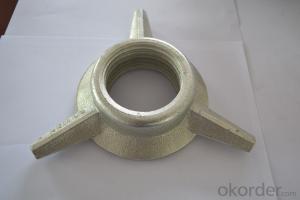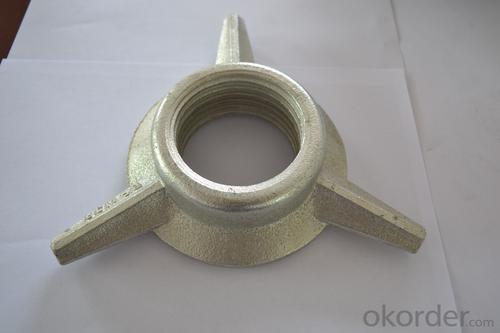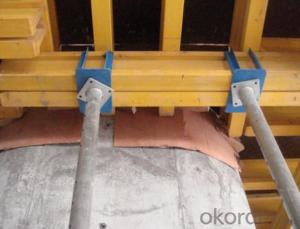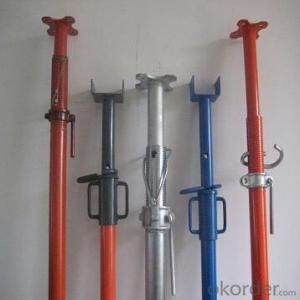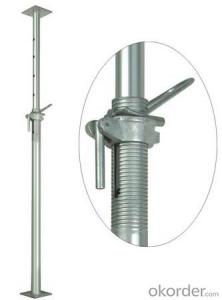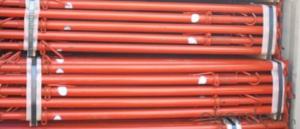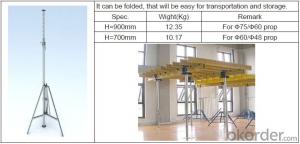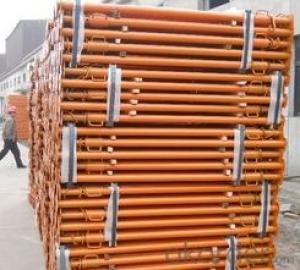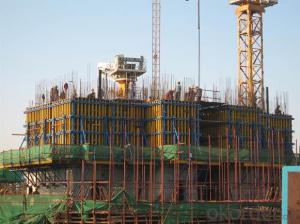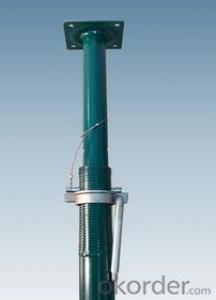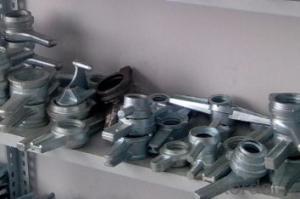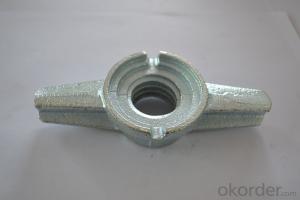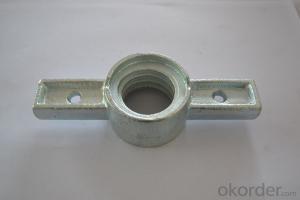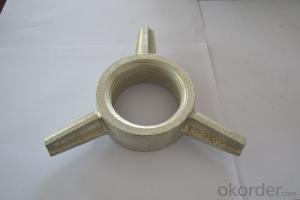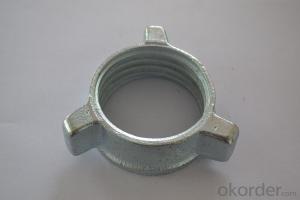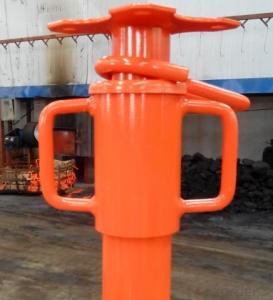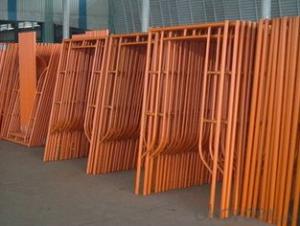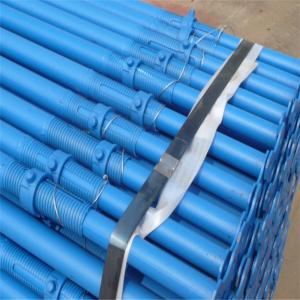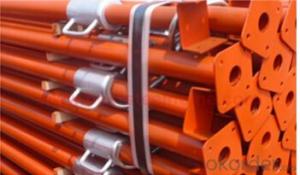OEM Two wing Butterfly Wing Nuts 10
- Loading Port:
- China Main Port
- Payment Terms:
- TT OR LC
- Min Order Qty:
- -
- Supply Capability:
- -
OKorder Service Pledge
OKorder Financial Service
You Might Also Like
Quick Details
| Model Number: | |||||
| Standard: | Type: | Certification: | |||
| Material: | Surface: |
Packaging & Delivery
| Packaging Detail: | Plastic bag, pallet packing, carton box, by customer's requirement |
| Delivery Detail: | within 30days after payment |
Specifications
Two wing Butterfly Wing Nuts
1>Excellent dimension accuracy
2>Finished: per your requirements
3>factory directly supply
Two wing Butterfly Wing Nuts
We supply kinds of metal parts totally according to clients' drawings and samples and special requirement.
1. Material: Ductile iron .
2. Sizes: Inner hole Dia 15/17mm.
We have different sizes ,types of wing nut to meet your needs, save your cost .
3. Weight: 0.35kg,thread pitch: 10.0mm.(or 6.35mm)
4. Surface: White Zinic , Yellow Zinic or painted, self color
5 Thread:casted or machine tap.
1. 12000M2 standard modern workshop guarantee production capability to satisfy the customers needs
2. Our Independent quality control department,Which make sure the quality of all products
3. Our efficient and experienced sales team ,provide friendly and thoughtful service for clients from all over the world
- Q: Are there any regulations or standards for using steel props?
- Regulations and standards exist for the use of steel props in the construction and engineering industries. Steel props, also called adjustable steel props or scaffolding props, are temporary support structures utilized for vertical support during construction or renovation activities. Various countries have building codes and safety standards that govern the use of steel props. These regulations guarantee that steel props are designed, manufactured, and utilized in a safe and efficient manner. While the specific regulations and standards may differ across jurisdictions, they generally encompass different aspects of steel prop usage, such as design criteria, load capacities, installation methods, and inspection requirements. An example of such regulations is the British Standard BS 4074, which specifies the criteria for adjustable steel props used in construction. It outlines manufacturing requirements, load capacities, safety factors, as well as guidelines for proper installation, bracing, and inspection procedures. Similarly, in the United States, the Occupational Safety and Health Administration (OSHA) sets standards for construction activities, including the use of steel props. OSHA regulations, like 29 CFR 1926 Subpart L, provide guidelines on scaffold use, including appropriate design, erection, and dismantling procedures for scaffolding systems, which may incorporate steel props. These regulations and standards are in place to ensure the safety of workers and the general public during construction activities. Their aim is to prevent accidents, collapses, and injuries resulting from faulty or improper use of steel props. Compliance with these regulations is typically mandatory and enforced by regulatory authorities, who may conduct inspections and issue penalties for non-compliance. Therefore, it is crucial for construction companies, contractors, and individuals involved in construction projects to be aware of and adhere to the applicable regulations and standards in their jurisdiction. They should ensure that the steel props used on their sites meet the necessary requirements, are correctly installed, and undergo regular inspections to ensure their integrity and safety.
- Q: What are the limitations of using steel props?
- There are several limitations associated with using steel props in construction and temporary support systems. 1. Weight and handling: Steel props can be heavy and difficult to transport, especially when working on higher levels of a building or in confined spaces. The weight can also make them challenging to manipulate and adjust during installation and removal. 2. Limited adjustability: While steel props offer some adjustability, their range may not be sufficient for all applications. Adjusting the height of steel props can be time-consuming and may require additional tools or equipment. 3. Load capacity: Steel props have a limited load-bearing capacity. Depending on the specific type and size of the prop, they may not be able to support heavy loads or withstand excessive forces. This limitation can restrict their use in certain construction projects, especially those requiring extensive structural support. 4. Corrosion: Steel props are prone to corrosion when exposed to moisture, chemicals, or harsh environmental conditions. If not properly maintained or protected, this corrosion can weaken the props over time, reducing their overall strength and stability. 5. Limited structural versatility: Steel props are primarily designed for vertical support and may not be suitable for certain structural configurations or unconventional building layouts. They may not provide adequate stability or alignment in non-standard situations, requiring alternative support systems to be used. 6. Cost: Steel props can be expensive to purchase or rent, especially for long-term projects or when a large number of props are required. The cost of transportation, storage, and maintenance should also be considered when using steel props. 7. Safety concerns: Steel props require proper installation and regular inspections to ensure they are secure and stable. Failure to do so can result in accidents, injuries, or structural damages. Additionally, steel props can pose a tripping hazard if not properly positioned or secured. It is important to carefully assess the specific requirements of a project and consider alternative support systems when necessary to overcome the limitations of using steel props.
- Q: What are the alternatives to using steel props?
- Some alternatives to using steel props include using adjustable metal or wooden scaffolding systems, hydraulic jacks, or even specialized modular systems made of lightweight materials like aluminum or fiberglass. These alternatives offer flexibility, ease of use, and can be customized to meet specific construction needs.
- Q: How long does a steel prop typically last?
- Various factors, including prop quality, applied load, and frequency of use, typically influence the lifespan of a steel prop. On average, these props can endure for approximately 5 to 10 years. By faithfully following the manufacturer's guidelines and conducting regular maintenance, one can considerably prolong a prop's life. It is crucial to promptly replace any prop showing indications of wear and tear, such as rust, cracks, or deformation, to ensure ongoing safety.
- Q: What are the common sizes and lengths available for steel props?
- Common sizes and lengths available for steel props vary depending on the manufacturer and region. However, there are some standard dimensions that are widely available in the market. Steel props, also known as adjustable scaffolding props, are commonly used in construction and formwork applications to support structures during the construction process. In terms of sizes, steel props typically come in various diameters ranging from 40mm to 60mm. The most common diameter used is 48mm. This diameter provides a good balance between strength and weight, making it suitable for most construction projects. As for lengths, steel props are available in different adjustable ranges. The lengths can range from as short as 1 meter to as long as 5 meters or more. The most commonly used lengths are 2 meters, 3 meters, and 4 meters. These lengths provide versatility and flexibility in supporting different heights and structures. It's worth noting that some manufacturers may offer customized sizes and lengths based on specific project requirements. These customized options can cater to unique construction needs, such as supporting higher loads or accommodating irregular structures. When selecting steel props, it is essential to consider the load-bearing capacity and the specific requirements of the project. It is advisable to consult with construction professionals or suppliers to determine the appropriate size and length of steel props needed for a particular project.
- Q: Are steel props adjustable in small increments?
- Steel props can be adjusted in small increments, providing precise leveling and support in construction projects. These adjustable steel acrow props, also referred to as adjustable steel props, are widely used in construction and temporary support systems. Featuring a telescopic inner tube and an outer tube, they allow for different height adjustments in small increments. This versatility makes steel props suitable for a variety of applications, ensuring stability and safety on construction sites.
- Q: Are steel props suitable for supporting scaffolding systems?
- Steel props, referred to as adjustable steel props or steel acroprops, are frequently employed in the construction and scaffolding sectors to offer temporary support to structures, including scaffolding systems. Crafted from top-tier steel, these props possess exceptional strength, durability, and the ability to withstand substantial loads. Their height is adjustable, granting versatility and adaptability for a variety of construction endeavors. Installation is straightforward, and they provide steadfast support, guaranteeing the safety and stability of scaffolding systems. In conclusion, steel props offer reliability and are an appropriate option for supporting scaffolding systems.
- Q: Are steel props suitable for supporting temporary film sets?
- Yes, steel props are suitable for supporting temporary film sets.
- Q: Can steel props be used in the construction of temporary road barriers?
- Temporary road barriers can indeed incorporate steel props in their construction. Steel props find frequent application in construction endeavors, serving as reliable support for scaffolding and formworks. Their purpose lies in furnishing stability and robustness, rendering them appropriate for diverse uses, including temporary road barriers. The adaptability of steel props permits effortless alteration of heights and firm grounding, thereby guaranteeing the road barriers' longevity and steadfastness. Furthermore, steel props boast commendable load-bearing capabilities, qualifying them to endure the influence of vehicles and other external pressures.
- Q: What are the different types of steel props?
- Steel props are adjustable and temporary support structures used in construction to provide support to ceilings, walls, beams, and other structural elements during construction or renovation. There are several types of steel props available in the market, each designed for specific purposes and load-bearing capacities. 1. Adjustable Steel Props: These are the most commonly used type of steel props. They consist of two main parts - an inner tube and an outer tube. The inner tube can be adjusted to the desired height by using a threaded mechanism, allowing for easy installation and adjustment. 2. Push-Pull Props: Also known as shore props, push-pull props are designed to provide support in both compression and tension. They consist of two steel tubes connected by a threaded rod. These props are often used in applications where temporary bracing is required. 3. Light Duty Props: These props are designed for lighter loads and are usually used in residential construction or smaller projects. They are lighter and easier to handle compared to heavy-duty props, making them suitable for less demanding applications. 4. Heavy Duty Props: As the name suggests, heavy-duty props are designed to support heavier loads. They are often used in commercial or industrial construction projects where higher load-bearing capacities are required. These props are usually made from thicker steel tubes and have a larger diameter to provide increased strength and stability. 5. Acrow Props: Acrow props are a specific type of adjustable steel props that have a unique design. They consist of an outer tube, an inner tube, and a pin system that allows for quick and easy adjustment. Acrow props are commonly used in formwork and falsework applications. 6. Trench Props: Trench props, also known as struts, are specifically designed for supporting trench walls during excavation or trenching work. They are adjustable in height and can be easily installed and removed as needed. 7. Formwork Props: Formwork props are used to support formwork systems during concrete pouring. They are designed to withstand high vertical loads and provide stability to the formwork structure. In conclusion, the different types of steel props include adjustable steel props, push-pull props, light duty props, heavy duty props, acrow props, trench props, and formwork props. Each type serves a specific purpose and has varying load-bearing capacities, allowing for efficient and safe temporary support in construction projects.
Send your message to us
OEM Two wing Butterfly Wing Nuts 10
- Loading Port:
- China Main Port
- Payment Terms:
- TT OR LC
- Min Order Qty:
- -
- Supply Capability:
- -
OKorder Service Pledge
OKorder Financial Service
Similar products
Hot products
Hot Searches
Related keywords
